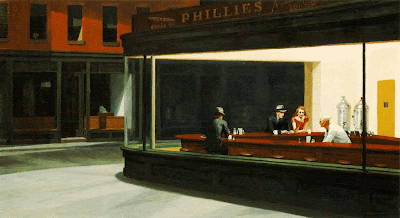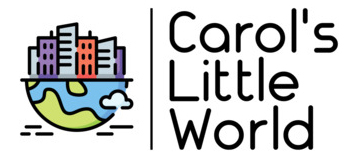
The American painter Edward Hopper was born in the suburban New York town of Nyack into a comfortable but strict middle class Baptist family. His father was a merchant and his mother came from a background of some wealth-her inheritance enabled Edward and his sister, Marion, to attend private schools and provided for their education. With his parent’s encouragement, Hopper was also supplied with materials for creating art from a young age, including illustrated books and materials for illustration. Though his family was predominately of Dutch descent, Hopper garnered his interest in French and Russian culture from his families influences.
Hopper began his artistic studies in correspondence school, but later attended the New York Institute of Art and Design, where he studied under William Merritt Chase and Robert Henri. Henri encouraged his students to paint what interested them rather than traditional subjects, and the group of painters in Henri’s circle, including John Sloan, were to become known as the Ashcan School of American Art. Hopper originally started working with a dark palette, then shifted to the lighter palette traditionally associated with the Impressionist movement (he was said to be influenced by Rembrandt, Manet, Degas, and the French engraver Charles Meryon) before settling back into the darker palette for which he is most well-known. Hopper also met his wife, Josephine Nivision through Henri, as she was also one of his students.
Apart from his palette, Hopper gravitated towards themes and subjects that were alone, desolate, bored, or isolated in some way. Critic Lloyd Goodrich said of his work, “one of the most poignant and desolating pieces of realism.” According to the Wikipedia, “The work [is] a series of stark urban and rural scenes that uses sharp lines and large shapes, played upon by unusual lighting to capture the lonely mood of his subjects. Though a realist painter, Hopper’s “soft” realism simplified shapes and details, and he used saturated color to heighten contrast and create mood.” Hopper often painted scenes from commonplace American life, such as gas stations, diners, motels, theaters and street scenes and his dark palette, featuring multiple light sources, some artificial, created something akin to a scene from a play or movie-there’s a strong cinematic feel to his work. Many people compare a Hopper painting to a film noir because of this cinematic feel. Indeed, in the painting shown here, Nighthawks (1942) from the wiki, “the shapes and diagonals are carefully constructed. The viewpoint is cinematic—from the sidewalk, as if the viewer is approaching the restaurant. The diner’s harsh electric light sets it apart from the dark night outside, enhancing the mood and subtle emotion. As in many Hopper paintings, the interaction is minimal, though the counterman seems to be having a few words with the man facing him.”
What Photographers Can Learn From Him
Edward Hopper is a painter who moves beyond influential. As a photographer, if you do not know who his is, you have most certainly seen work that was influenced by him. Hopper is a favorite of filmmakers. A list of films that have been influenced by him would include Alfred Hitchcock’s iconic house in Psycho, the visual look of Blade Runner, and even 2002’s The Road to Perdition. He has also influenced the world of music, including artists like Madonna and Tom Waits.
The dark palette and distinct leading lines, the cinematic feel of his work, the isolate mood, coupled with the commonplace subjects, such as diners, theaters, and gas stations are still strong influences to the modern photographer. His influence is so widespread in the photographic world that there is not only a Flickr group devoted to his work, but there is a Flickr group devoted to capturing various renditions of Nighthawks-the painting shown here has been a key influence to many night photographers. I would go so far as to say that, if you intend to shoot any film at night at all, you would best bone up a bit on the work of Hopper because you will be compared to his work even if you can somehow remain blissfully unaware of his influences. Nighthawks is perhaps the single most influential piece of non-photographic based art in the world of night photography, so you best study it before attempting to advance in the field. The entire diner culture, “blue plate special,” working class Americana art movement has its roots firmly planted in the work of Edward Hopper.
But, Nighthawks aside, photographers can benefit from Hopper’s influence by looking to his careful placement of the figure within the space, his urban sensibility, his use of multiple lighting sources (paying careful attention to “warm” vs. “cool” types of lighting) his cinematic mood, his wonderful leading lines, and his ability to take the common, gritty elements of everyday life and celebrate them. Thanks to his dark palette, his urban awareness, his soft realism, his light and shadow that combine to create a soft mood and his celebration of the ordinary, Edward Hopper earns his spot in the ranks of Painters Every Photographer Should Know. You can read more about Edward Hopper on the Wikipedia entry about him, and look for more painters (and posts) in the series to come.
—————————————————————————————————————
This is next in a series called “Painters Every Photographer Should Know.” The painting shown here is Edward Hopper’s “Nighthawks” (1942) . Please note that the paintings and photographs in this series are not copyright the author of this website, may be subject to international copyright law, and are provided her for educational purposes only.

Author
Good overview!
Author
Thanks, Mythopolis! Hopper is one of my favorites.